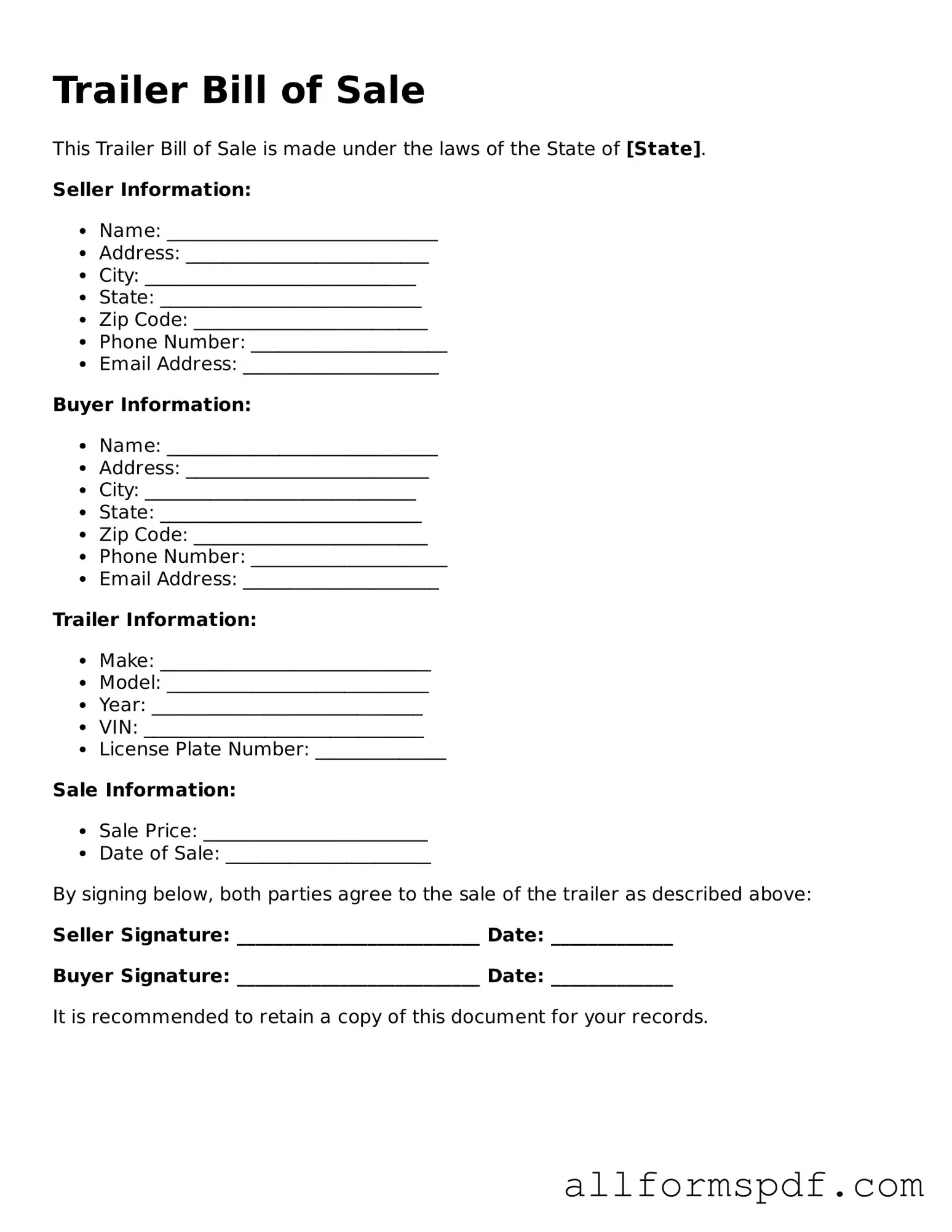Filling out a Trailer Bill of Sale form can seem straightforward, but many individuals make common mistakes that can lead to complications down the line. One frequent error is failing to provide complete information about the trailer. Essential details such as the make, model, year, and Vehicle Identification Number (VIN) should be included. Omitting any of these can create confusion and may affect the registration process.
Another mistake involves incorrect or missing signatures. Both the seller and buyer must sign the document for it to be legally binding. If one party neglects to sign, the sale may be considered invalid. It's important to ensure that all necessary signatures are present before finalizing the transaction.
People often overlook the importance of including the sale price. Leaving this field blank or writing an ambiguous amount can lead to disputes later. The sale price is not just a number; it serves as a record of the transaction and can have tax implications for both parties.
Additionally, some individuals fail to date the form. A date is crucial as it establishes when the sale occurred. Without a date, it can be difficult to prove when the transaction took place, which may be necessary for future legal or financial matters.
Another common error is not providing the correct identification for both the buyer and seller. Each party should include their full name and address. In some cases, a driver's license number or other identification may be required. This information helps verify the identities of both parties involved in the sale.
People also sometimes neglect to check for any liens on the trailer. If the trailer has an outstanding loan or lien, the seller must disclose this information. Failing to do so can lead to legal issues, as the buyer may inadvertently purchase a trailer that is not fully owned by the seller.
Inaccurate descriptions of the trailer's condition can also pose problems. A thorough description should include any damages or repairs made to the trailer. Misrepresenting the condition can lead to disputes and potential legal action if the buyer feels misled.
Finally, many individuals forget to make copies of the completed form. Keeping a copy for personal records is essential. This documentation can serve as proof of the transaction and can be helpful in resolving any future disputes that may arise.
